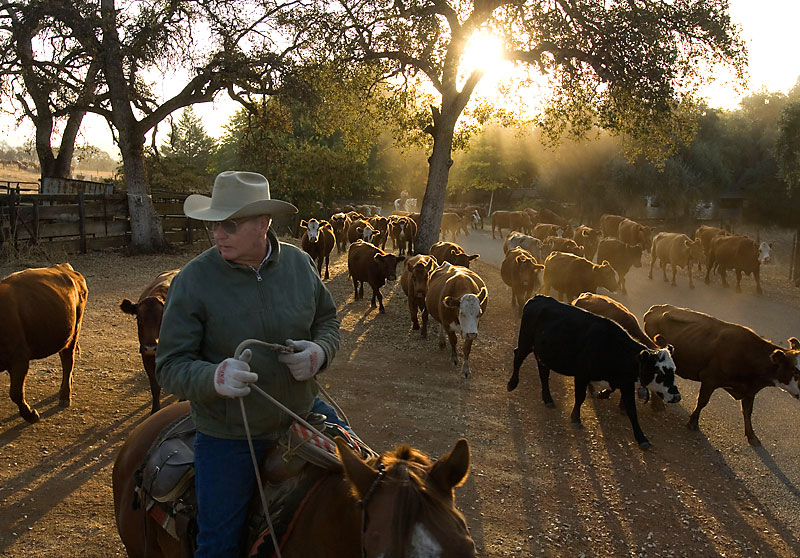
On today’s Cow-Calf Corner, Barry Whitworth, DVM, Senior Extension Specialist, Oklahoma State University Cooperative Extension Service talks injuries on the farm or ranch.
In January, I attended the Oklahoma Veterinary Conference. While waiting for one of the sessions to start, a classmates of mine made the comment of how many of the attendees walk with a limp, used a cane, and/or have damaged hands. We all agreed that working with animals is hard on the body. In general, anything associated with farming and ranching is dangerous.
Most farmers and ranchers know that agriculture is a dangerous occupation. According to United States Bureau of Statistics, workers involved in agriculture, forestry, and fishing had the highest occupational fatality rate in 2022. The fatality rate of 23.5 per 100,000 full-time equivalent (FTE) workers for this group is much higher when compared to the overall occupation fatality rate of 3.7 per 100,000 FTE. Most of the agriculture related fatalities are associated with transportation such as tractor overturns and vehicle crashes, but a fair number involve livestock.
Livestock accounts for a significant amount of human injury and deaths. A survey of seven states in the central United States (US) found livestock were a frequent cause of injury. One survey found cattle accounted for almost one third of the injuries. In another survey, cattle were responsible for 36% of the fatalities. With their unpredictability and enormous power, bulls can be extremely dangerous. One study reported 261 attacks on people with 149 reported as fatalities and 112 as injuries.
Most victims of cattle incidents are struck, trampled, gored, and/or kicked. The most common types of injuries are contusions, fractures, and lacerations involving the lower and upper extremities. More severe injuries are related to head trauma, internal damage, and crushing injuries.
Many factors play a part in causing injuries and fatalities. One survey found that the age of the victim was significant. Groups with younger people were at higher risk of injury when compared to older ranchers. This may be due to human error and overconfidence of the handler as was pointed out in one report as a cause of injury and death. However, medical conditions such as hearing loss and arthritis, which are more common in older people, can play a role in being injured. These conditions may restrict a person’s ability to move out of danger or hear activities that may warn them to move. This relates to another reported risk factor of individuals working alone. It is reported that one third of the fatalities occur when no one else is present. Another interesting fact associated with fatalities is that one third of the deaths were caused by animals that had previously shown aggressive behavior. It is wise to cull aggressive animals.
Another factor to consider is facilities. Several studies indicated that cattle equipment, housing, and working facilities contributed to injuries. This was especially important in bull incidents. Unfortunately, over 40% of cattlemen in one survey reported that they do not think their facilities are safe but hesitate to improve them. The reasons given include the cost of new equipment, satisfaction with the current facility, and lack of both time and knowledge on how to build a new facility.
Most if not all injuries and fatalities caused by livestock can be prevented. Livestock producers can reduce the risk of injury by studying animal behavior, by using proper handling techniques, and by using equipment correctly. Beef Quality Assurance as well as many other groups provide training in animal behavior and low stress cattle handling. Facilities and equipment are costly, but when designed and used correctly, accidents are reduced. Individuals need to protect themselves by wearing proper footwear, clothing, and head and eye protection. Also, many accidents happen when farmers and ranchers work alone. A partner present to keep watch may prevent an injury. Lastly, producers need to recognize their limits. When animals are involved, overconfidence will get someone hurt.
From a personal standpoint, I have had my share of incidents. I have been bitten, scratched, clawed, trampled, tossed around, mashed, and crushed by a variety of them. All of the incidents were the result of overconfidence, human error, lack of knowledge, and poor equipment and facilities. My life’s experiences are the same as many other farmers and ranchers. We all have one life to live, so we all need to take better care of ourselves.
For additional information on livestock safety, producers should visit their Oklahoma State University County Extension Agriculture Educator.


















